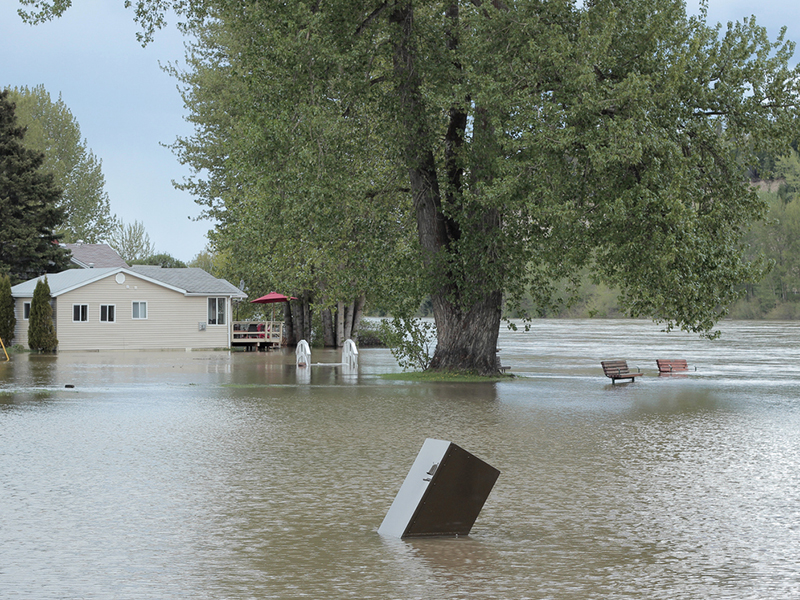
‘Much clearer picture’ of how Ottawa will address flood risk coming soon
September 29, 2020 by Greg Meckbach

Print this page Share
A special pool, in which high-risk properties would have caps or subsidies on premiums for flood insurance, remains a possibility in Canada, and the industry should have a much better idea this fall of what the government plans to do, an Insurance Bureau of Canada official predicts.
In a 2019 paper, IBC proposed three possible options to address flood insurance risk. One of those, a public-private high-risk pool, could get capital from ceded premiums, contributions by government, levies applied to homeowners and levies applied to property taxes.
“Stay tuned because we are expecting, at some point this fall, we will have a much clearer picture of what direction the government wants to go,” said Craig Stewart, IBC’s vice president of federal affairs, in an interview Monday.
No one is confirming that such a high-risk pool is actually going to happen, however.
In its throne speech last week, the federal government promised to invest in reducing the impact of climate-related disasters, like floods and wildfires, to make communities safer and more resilient.
“Flood was confirmed to be a continuing priority for the government moving forward. We expect that there are going to be developments this fall. There is a fair amount of preparatory work and ongoing dialogue with the provinces underway and so that work is all continuing,” said Stewart.
Canadian insurers started offering overland flood insurance on personal properties in 2015. But today, for about million Canadians who are in high-risk properties, affordable and comprehensive insurance solutions do not exist, Stewart said.
Canadian Underwriter asked Public Safety Canada this past May if the industry can expect to have a low-cost national flood insurance program in place for homeowners at high risk of flood. The federal government did not answer the question directly but did confirm in mid-May that the government will give “full consideration” to the proposals released in the IBC paper in June of 2019. One of those options is a pure market approach, meaning homeowners would decide whether to self-insure, relocate or try to get insurance form the private market. Another option would have the private sector take on as much contingent liability for flood as its risk appetite allows, while leaving the highest-risk properties (where private-sector insurance would not be affordable at actuarially-sound rates) to be covered by government disaster assistance programs.
The third option is the high-risk pool. This is still a possibility, Stewart said. “The federal government and the provinces are collaborating with our industry and exploring the best way to set up that pool.”
The 2019 paper is titled Options for Managing the Flood Costs of Canada’s Highest-Risk Residential Properties. In it, IBC refers to Flood Re, a special purpose vehicle set up by the British government in 2016 to help insure high-risk properties. That is a temporary program that the British government plans to keep in place until 2039, in order to give Britons enough time to de-risk properties.
Flood Re is not something the Canadian government could copy directly because, in Canada, it is the provinces who both regulate insurance and are responsible for building permits and land use, IBC notes.
Feature image via iStock.com/Cathy_Britcliffe
Have your say: